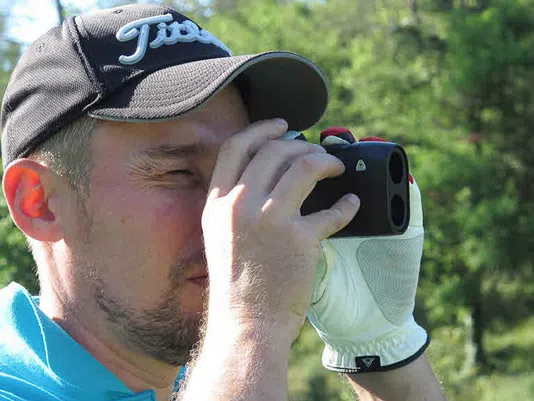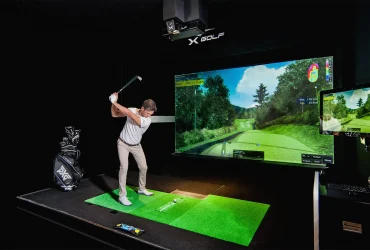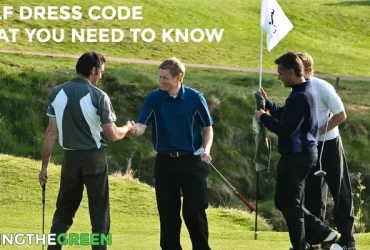How do Golf Rangefinders Work?

There are two types of rangefinders that golfers use, GPS and Laser. GPS rangefinders require less time to determine your distance to the hole because they use measurements to known points. However, they require the course to be mapped and your course might not be. Both types of rangefinder are extremely accurate.

Contents
How does a GPS rangefinder work?
GPS (global positioning system) uses a network of satellites orbiting the Earth. Most of us are familiar with this system which is used in the car and smart phones to assist navigation. The satellite network transmits signals to a receiver in your device. By using distance information from several satellites, the system is able to accurately pinpoint the location of the device. However, that tell you where you are right now. But you want to know the distance from you to a specific object on the golf course, like a flag. How does it do that?
The GPS rangefinder records exactly where you are and compares that position with pre-programmed data from the golf course to calculate the distance from you to an object that it already knows the location of – yes, to use a GPS rangefinder, various points on each hole have to be mapped or pre-recorded. Sometimes they require you to pay a monthly fee depending on the type of service you choose. The system relies on and uses expensive technology, and the data that it uses for calculations has to be updated regularly to maintain accuracy – the mapped targets can move! Prior to playing a particular golf course, you will need to download the course mapping details from your computer before you start. When you get to the course, turn on the rangefinder to let it acquire the GPS satellite feed. All this may sound complicated but it’s easy once you get used to using it.
The advantage of GPS rangefinders is that it will tell you a distance even though you cannot see a particular object. For example, you’re on the tee and it knows exactly where the green is. There is no measurement required, just a calculation.
How does a Laser rangefinder work?
Now, a Laser rangefinder works differently, rather than using stored data, it works in real time. The rangefinder bounces a beam of light off the object that you’re focusing on. Of course, for this to work, the object, tree or flag stick, has to be in view. Once you have located the target in the viewfinder, pull the trigger and a low power beam is sent from your rangefinder to the flag, for example, and the time it takes to bounce back is measured. Using that time, the distance to the flag can be accurately calculated and displayed. If you haven’t successfully “locked on” to the target, then the system will display an error.
If you don’t get a positive reading or measurement, keep the rangefinder steady and try again. If you are playing a course with lots of hills and slopes, you can use the “slope technology” built into some rangefinders.
Since the flag has to be in view, golf rangefinders come with up to 5x magnification to assist the search for your target. If you’re targeting the flag on a dogleg, then this system won’t help you. If you can just see the flag through the trees, the laser rangefinder will give you a “crow flies” distance which probably won’t be of much help.
Slope technology
When rangefinders were first introduced, most models didn’t take into account the undulations and slopes on the golf course. A standard rangefinder without slope makes the assumption that you’re aiming at a target that’s level with your position, so it’s not uphill or downhill from you. The problem is your uphill shot will travel shorter than one at a level target because the ball has less time to travel to the target before it hits the ground. As technology improved, the slope feature became more common.
Slope works by modifying measurements allowing for changes in elevation between you and the target. The USGA initially banned this feature but now rangefinders where the slope feature can be turned off, are allowed – you can use the rangefinder, but the slope feature must be turned off in tournament golf.
Conclusion
Well, now that you know how both systems work, you can find out much more information about golf rangefinders in this article.



